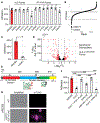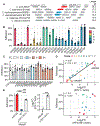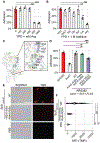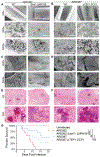A Candida auris-specific adhesin, Scf1 , governs surface association, colonization, and virulence
- PMID: 37769084
- PMCID: PMC11235122
- DOI: 10.1126/science.adf8972
A Candida auris-specific adhesin, Scf1 , governs surface association, colonization, and virulence
Abstract
Candida auris is an emerging fungal pathogen responsible for health care-associated outbreaks that arise from persistent surface and skin colonization. We characterized the arsenal of adhesins used by C. auris and discovered an uncharacterized adhesin, Surface Colonization Factor (Scf1), and a conserved adhesin, Iff4109, that are essential for the colonization of inert surfaces and mammalian hosts. SCF1 is apparently specific to C. auris, and its expression mediates adhesion to inert and biological surfaces across isolates from all five clades. Unlike canonical fungal adhesins, which function through hydrophobic interactions, Scf1 relies on exposed cationic residues for surface association. SCF1 is required for C. auris biofilm formation, skin colonization, virulence in systemic infection, and colonization of inserted medical devices.
Figures





References
-
- Chow NA, Gade L, Tsay SV, Forsberg K, Greenko JA, Southwick KL, Barrett PM, Kerins JL, Lockhart SR, Chiller TM, Litvintseva AP, US Candida auris Investigation Team, Multiple introductions and subsequent transmission of multidrug-resistant Candida auris in the USA: a molecular epidemiological survey. Lancet Infect. Dis 18, 1377–1384 (2018). - PMC - PubMed

